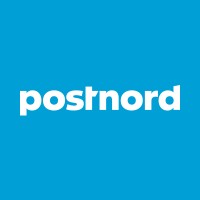
PostNord Sverige Company Cyber Security Posture
postnord.seWe deliver. PostNord is the leading supplier of communications and logistics solutions to, from and within the Nordic region. We also ensure the postal service to households and businesses in Sweden and Denmark. With our expertise and a strong distribution network, we develop options for tomorrow’s communication, e-commerce, distribution and logistics in the Nordic region. In 2014, PostNord had 38,000 employees and sales of SEK 40 billion. The parent company is a Swedish public limited company headquartered in Solna, Sweden.
PostNord Sverige Company Details
postnord-sverige
10,001+ employees
0
none
Transportation, Logistics, Supply Chain and Storage
postnord.se
Scan still pending
POS_3254346
In-progress
Between 200 and 800
This score is AI-generated and less favored by cyber insurers, who prefer the TPRM score.
 PostNord Sverige Global Score
PostNord Sverige Global Score.png)

PostNord Sverige Company Scoring based on AI Models
| Model Name | Date | Description | Current Score Difference | Score |
|---|---|---|---|---|
| AVERAGE-Industry | 03-12-2025 | This score represents the average cybersecurity rating of companies already scanned within the same industry. It provides a benchmark to compare an individual company's security posture against its industry peers. | N/A | Between 200 and 800 |
PostNord Sverige Company Cyber Security News & History
| Entity | Type | Severity | Impact | Seen | Url ID | Details | View |
|---|
PostNord Sverige Company Subsidiaries

We deliver. PostNord is the leading supplier of communications and logistics solutions to, from and within the Nordic region. We also ensure the postal service to households and businesses in Sweden and Denmark. With our expertise and a strong distribution network, we develop options for tomorrow’s communication, e-commerce, distribution and logistics in the Nordic region. In 2014, PostNord had 38,000 employees and sales of SEK 40 billion. The parent company is a Swedish public limited company headquartered in Solna, Sweden.
Access Data Using Our API

Get company history
.png)
PostNord Sverige Cyber Security News
CISA’s Joint Cyber Defense Collaborative takes major personnel hit
The Cybersecurity and Infrastructure Security Agency's marquee program for collaborating with the private sector to thwart hackers has been ...
Senate committee advances Trump nominee to lead cybersecurity agency that protects election systems
A Senate committee has advanced the nomination of President Donald Trump's pick to lead the Cybersecurity and Infrastructure Security Agency.
AI agent autonomously solves complex cybersecurity challenges using text-based tools
Artificial intelligence agents—AI systems that can work independently toward specific goals without constant human guidance—have ...
Cybersecurity upstart Legion emerges from stealth with $38 million from Accel, Coatue, and others
Legion, among Picture's first investments, is a security operations center (SOC) that uses AI to detect threats within users' computer browsers.
Trump’s cybersecurity cuts putting nation at risk, warns New York cyber chief
During the first few months of the new Trump administration, the White House slashed cybersecurity budgets, staff, and initiatives.
Cybersecurity leaders are upskilling for AI, focusing less on hiring, new data shows
Cybersecurity leaders are less stressed about hiring new talent and more worried about having the skills they need to tackle the AI-enhanced ...
Tonic Security raises $7M Seed round to tackle cybersecurity alert overload
The Israeli startup aims to help companies better prioritize and respond to risks.
Cybersecurity tips for state election offices, as federal support dwindles
Researchers pointed to the smooth process they observed during the 2024 election that included a decisive victory by President Donald Trump and ...
MITRE’s Freeman calls for structural reform in optimizing OT cybersecurity reporting structures
“Manual and inconsistent processes often lead to vague or incomplete reports on cyber incidents, weakening the value of shared threat ...

PostNord Sverige Similar Companies
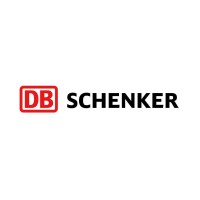
DB Schenker
At DB Schenker, we're not just about logistics; we're about understanding what truly matters to you. As a global leader in transportation and logistics, we're dedicated to supporting industries and businesses worldwide in the seamless exchange of goods. Our integrated approach ensures that every ste
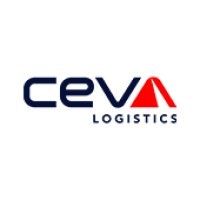
CEVA Logistics
CEVA provides world-class supply chain solutions for large and medium-size national and multinational companies across the globe. As an industry leader, CEVA offers customers complete supply chain design and implementation in contract logistics and freight management, alone or in combination. Toget

DP World
Trade is the lifeblood of the global economy, creating opportunities and improving the quality of life for people around the world. DP World exists to make the world’s trade flow better, changing what’s possible for the customers and communities we serve globally. With a dedicated, diverse and p

Österreichische Post AG
Die Österreichische Post AG ist ein international tätiger Post-, Logistik- und Dienstleistungskonzern mit herausragender Bedeutung für Österreich. Konzernweit erwirtschaftete die Post im Jahr 2024 mit ihren rund 28.000 Mitarbeiter*innen einen Jahresumsatz von über 3,1 Mrd EUR. In Österreich umfasst
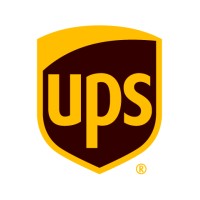
UPS Supply Chain Solutions
UPS Supply Chain Solutions offers a comprehensive portfolio of services to enhance customers' business performance, including logistics and distribution, transportation and freight, consulting, customs brokerage, and international trade services. UPS provides the expertise and the scale to meet the
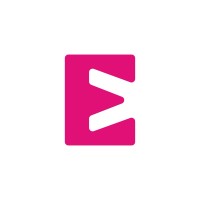
Ecom Express Limited
Ecom Express: Delivering Over 1.9 Billion Reasons to Trust Us Based in Gurugram, Ecom Express was established in 2012 by veterans backed by 100+ years of collective logistics expertise. We aren't just a logistics provider—we're your partner in bridging distances and making connections. Our network

Frequently Asked Questions
Explore insights on cybersecurity incidents, risk posture, and Rankiteo's assessments.
PostNord Sverige CyberSecurity History Information
How many cyber incidents has PostNord Sverige faced?
Total Incidents: According to Rankiteo, PostNord Sverige has faced 0 incidents in the past.
What types of cybersecurity incidents have occurred at PostNord Sverige?
Incident Types: The types of cybersecurity incidents that have occurred include .
Incident Details
What are the most common types of attacks the company has faced?
Additional Questions
What Do We Measure?
















Every week, Rankiteo analyzes billions of signals to give organizations a sharper, faster view of emerging risks. With deeper, more actionable intelligence at their fingertips, security teams can outpace threat actors, respond instantly to Zero-Day attacks, and dramatically shrink their risk exposure window.
These are some of the factors we use to calculate the overall score:
Identify exposed access points, detect misconfigured SSL certificates, and uncover vulnerabilities across the network infrastructure.
Gain visibility into the software components used within an organization to detect vulnerabilities, manage risk, and ensure supply chain security.
Monitor and manage all IT assets and their configurations to ensure accurate, real-time visibility across the company's technology environment.
Leverage real-time insights on active threats, malware campaigns, and emerging vulnerabilities to proactively defend against evolving cyberattacks.




